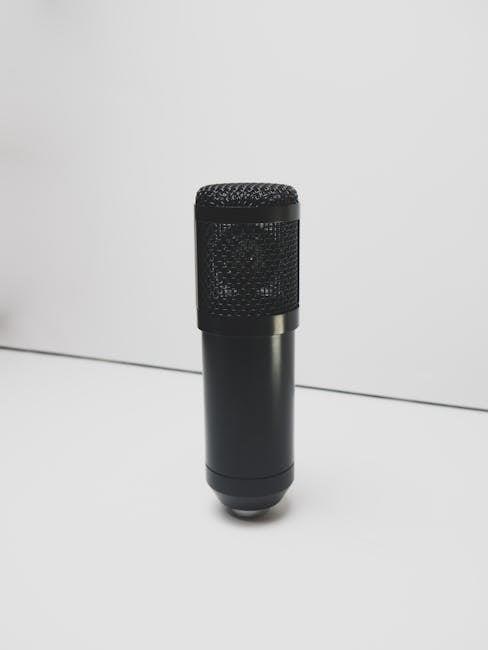Headstamps are essential for identifying 223 Remington and 5.56 NATO cartridges, providing crucial details about their origins and specifications. They help differentiate between chamber specs, pressure levels, and case dimensions, ensuring safe and accurate reloading; While often used interchangeably, understanding their distinctions is vital for reloaders and shooters alike.
Overview of 223 Remington and 5.56 NATO Cartridges
The 223 Remington and 5.56 NATO cartridges are popular rifle rounds with distinct origins and specifications. The 223 Remington, developed by Remington Arms in 1964, is a civilian cartridge designed for hunting and target shooting, operating at lower chamber pressures. In contrast, the 5.56 NATO was created for military use, featuring slightly higher pressure and a thicker case wall for reliability in adverse conditions. While they are dimensionally similar, the 5.56 NATO includes a NATO cross marking on the headstamp, signifying its adherence to military standards. Understanding these differences is crucial for reloaders and shooters to ensure safe and optimal performance.
Importance of Headstamps in Ammunition Identification
Headstamps are critical for identifying cartridge specifications, ensuring safe and proper use. They provide essential details such as caliber, manufacturer, and production dates, helping shooters and reloaders distinguish between 223 Remington and 5.56 NATO rounds. The NATO cross marking on 5.56 brass signifies military-grade standards, while civilian 223 rounds lack this. Headstamps also reveal the manufacturer’s quality and reliability, aiding in reloading decisions. Proper identification prevents dangerous chambering mismatches, ensuring optimal performance and safety. By decoding headstamps, shooters can verify compatibility with their firearms and maintain consistency in reloading. This visual marking system is indispensable for enthusiasts and professionals alike, safeguarding against potential hazards and enhancing reloading accuracy.
Key Differences Between 223 and 5;56 Brass
The primary distinction lies in case thickness and chamber specifications. 5.56 NATO brass is slightly thicker, reducing case capacity compared to 223 Remington. This affects pressure levels, as 5.56 rounds operate at higher pressures. While both calibers share similar external dimensions, their internal differences are critical. The 5.56 NATO chamber has a longer throat, allowing for higher pressure, whereas the 223 Remington chamber is shorter. These differences mean 5.56 brass is not always interchangeable with 223 Remington in reloading. Understanding these variations is vital for safely reloading and ensuring compatibility with firearms. Proper identification through headstamps helps prevent potential hazards and maintains optimal performance.

History and Development of 223 and 5.56 Ammunition
The 223 Remington emerged in the 1960s, designed by Remington Arms for civilian use, while the 5.56 NATO was standardized in the late 1970s for military applications. Both calibers share origins tied to the U.S. military’s need for a high-velocity, lightweight round, with the 5.56 being a slightly modified version of the 223 for military use. Their development reflects advancements in ammunition technology and differing requirements for civilian and military markets.
Origins of the 223 Remington Cartridge
The 223 Remington cartridge was developed in the early 1960s by Remington Arms Company as a high-velocity, lightweight round. It originated from the .222 Remington Magnum, modified to meet the U.S. military’s need for a smaller caliber for the AR-15 rifle. The cartridge was designed for minimal recoil and maximum accuracy, making it ideal for both hunting and target shooting. Its commercial release in 1964 coincided with growing civilian interest in high-performance ammunition. The 223’s popularity stemmed from its versatility, leading to its adoption by the military as the 5.56 NATO, with slight modifications for military specifications. This dual-purpose design laid the foundation for its widespread use and recognition in both civilian and military contexts.
Development of the 5.56 NATO Standard
The 5.56 NATO standard was developed in the early 1960s to meet military requirements for a lightweight, high-velocity cartridge. It was based on the commercial 223 Remington but modified to ensure reliability in adverse conditions. The NATO specification included stricter chamber dimensions, higher pressure tolerances, and a thicker case wall for durability. The development involved collaboration between Remington and the U.S. military to standardize the cartridge for global use. Key features included the NATO cross marking on headstamps, signifying compliance with military standards. This standardization ensured interoperability across NATO member countries, making the 5.56 NATO a cornerstone of modern military ammunition while influencing civilian shooting sports and reloading practices.
Evolution of Headstamp Styles Over Time
Headstamp styles for 223 Remington and 5.56 NATO cartridges have evolved significantly over the years, reflecting changes in manufacturing techniques and standards. Early headstamps were simple, often displaying only the caliber designation. As production scaled, manufacturers began including more detailed markings, such as lot numbers and production dates, to enhance traceability. The introduction of NATO standards brought the iconic NATO cross marking, denoting military-grade ammunition. Modern headstamps now incorporate logos, abbreviations, and even symbols, providing clear identification of the cartridge’s origin and specifications. This evolution ensures better quality control and helps reloaders and shooters identify compatible ammunition, making headstamps indispensable for both functionality and historical insight.

Major Manufacturers of 223 and 5.56 Ammunition
Leading manufacturers like Lake City, Winchester, Federal, and IMI produce high-quality 223 and 5.56 ammunition, with distinct headstamps trusted by reloaders and shooters worldwide.
Lake City (LC) Headstamps and Their Significance
Lake City (LC) headstamps are highly regarded among shooters and reloaders due to their consistent quality and reliability. Produced by the Lake City Army Ammunition Plant, LC headstamps are synonymous with military-grade 5.56 NATO and .223 Remington cartridges. Known for strict manufacturing standards, LC brass is favored for its durability and precision, making it ideal for reloading. The headstamp often includes the NATO cross symbol, indicating compliance with military specifications. Reloaders trust LC brass for its uniform case thickness and reliable performance. While LC brass is widely used in military applications, it is also popular among civilian shooters seeking high-quality ammunition. Its reputation for consistency makes it a top choice for those seeking reliable reloading materials.
Winchester (WCC) Headstamps and Their Reputation
Winchester (WCC) headstamps are widely recognized for their high-quality ammunition production. Known for consistency and reliability, WCC brass is a favorite among reloaders and shooters. The headstamp often features the Winchester logo or “WCC,” signifying its origin from the Winchester Repeating Arms Company. WCC brass is prized for its durable construction and precise manufacturing, making it ideal for both .223 Remington and 5.56 NATO cartridges. While historically associated with civilian markets, WCC brass meets rigorous standards, earning it a reputation as premium reloading material. Its reliability and performance have made it a trusted choice for those seeking dependable ammunition. WCC headstamps are also sought after by collectors due to their historical significance in firearms manufacturing.
Federal (FC) and IMI Headstamps: Similarities and Differences
Federal (FC) and IMI headstamps share similarities in style, often catering to similar end-users, but distinct differences set them apart. Federal headstamps are known for their consistent quality and reliability, with their brass being a popular choice among reloaders. The FC headstamp typically denotes Federal Cartridge Company production, ensuring high standards in manufacturing. IMI headstamps, produced by Israel Military Industries, are recognized for their robust construction and military-grade specifications. While both are durable, IMI brass is often associated with NATO standards, offering slightly thicker case walls for added strength. Federal’s XM193 line, for instance, mirrors military M193 rounds but is tailored for civilian use. Both headstamps are highly regarded, but IMI’s military heritage gives it a unique reputation among enthusiasts.
Armscor USA Headstamps: A Modern Perspective
Armscor USA headstamps represent a modern approach to ammunition manufacturing, blending affordability with reliability. Known for producing high-quality 223 Remington and 5.56 NATO cartridges, Armscor has gained a reputation for consistency and performance. Their headstamps are distinct and easily identifiable, reflecting their Philippine origins and commitment to precision engineering. Armscor brass is often praised for its durability and versatility, making it a favorite among both casual shooters and reloaders. While not as historically prominent as some other manufacturers, Armscor has carved out a niche in the market by offering cost-effective solutions without compromising on quality. Their headstamps are a testament to their growing influence in the firearms community.
Identifying and Sorting 223 and 5.56 Brass
Identifying brass requires checking headstamps, markings, and twist rates. Clear headstamps indicate caliber, while NATO crosses confirm 5.56 specs. Sort by headstamp and inspect for clarity to ensure compatibility and safety.
How to Identify Brass Without Explicit 223 or 5.56 Markings
When brass lacks explicit 223 or 5.56 markings, examine the headstamp for clues like “NATO” or a cross symbol, which indicate 5.56 specs. Measure case dimensions, as 5.56 cases are slightly thicker. Check for twist rate markings or manufacturer codes, which can imply caliber. Sort by headstamp consistency to maintain reloading accuracy. If unsure, compare with known samples or consult online databases for headstamp decoding. This method ensures safe and reliable identification, even without clear caliber markings.
Understanding the NATO Cross Marking and Its Implications
The NATO cross marking is a distinctive symbol on 5.56 NATO brass, confirming it meets stringent military specifications. This marking ensures the cartridge is designed for use in adverse conditions, with higher pressure levels compared to .223 Remington. Brass with the NATO cross typically has thicker walls and slightly less case capacity. Identifying this marking is crucial for reloaders, as it indicates the brass is built to withstand the demands of 5.56 NATO loads. Always sort such brass separately to ensure proper reloading practices and safety. The NATO cross is a reliable indicator of the cartridge’s origin and performance standards, making it a key identifier for enthusiasts and reloaders alike.
The Role of Twist Rate in Caliber Markings
The twist rate, often stamped near the caliber marking, plays a critical role in determining bullet stabilization and accuracy. A faster twist rate (e;g., 1:7) is typically used for heavier bullets, while a slower twist (e.g., 1:9) suits lighter projectiles. For 223 Remington and 5.56 NATO, the twist rate affects compatibility with different bullet weights and types. Identifying the twist rate is essential for reloaders, as it influences bullet performance and accuracy. Always match the bullet weight and type to the twist rate specified on the barrel or cartridge marking. This ensures optimal performance and prevents potential issues such as inconsistent grouping or instability during flight.
Best Practices for Sorting and Organizing Brass
Sorting and organizing brass is crucial for efficient reloading and ensuring optimal performance. Begin by separating brass by headstamp to maintain consistency in loads. Visually inspect each case for cracks, dents, or excessive wear, discarding any damaged pieces. Organize cases by caliber (.223 or 5.56) and twist rate to match specific firearm requirements. Store brass in labeled bins or bags to prevent mixing and simplify access. Clean and polish cases before storage to remove residue and debris. For reloaders, consider segregating military and commercial brass due to differences in thickness and case capacity. Proper sorting and organization enhance reloading accuracy and safety, ensuring reliable performance in your firearm.

Headstamp Variations and Their Meanings
Headstamps vary by manufacturer, featuring codes, symbols, or lot numbers. These markings identify the brass’s origin, specs, and production details, aiding reloaders and shooters in differentiation.
Decoding Headstamp Abbreviations and Symbols
Headstamp abbreviations and symbols provide critical information about cartridge origins and specifications. Codes like “FC” (Federal) or “IMI” (Israel Military Industries) indicate the manufacturer, while markings such as the NATO cross (✕) signify compliance with military standards. Symbols may also denote bullet type or performance characteristics. Lot numbers, often included, help trace production dates and quality control. Understanding these markings is essential for identifying brass suitability for reloading or shooting; For example, the NATO cross ensures thicker brass and higher pressure ratings, distinguishing it from commercial .223 Remington cases. Decoding these elements allows shooters and reloaders to organize and use brass effectively, ensuring safety and optimal performance.
Significance of Lot Numbers and Production Dates
Lot numbers and production dates on headstamps are vital for tracing a cartridge’s origin, materials, and manufacturing tolerances. These markings help identify the specific production run and enable shooters to research the cartridge’s history. Production dates indicate the age of the brass, which can affect its condition and reloadability. Lot numbers also reveal whether multiple cartridges were produced in the same batch, ensuring consistency in performance. For reloaders, sorting brass by lot number can help maintain uniform results. Additionally, lot-specific issues or recalls can be identified through these markings. Understanding lot numbers and production dates enhances the ability to evaluate brass quality and reliability.
Unique Headstamps: KFA and Other Rare Examples
Unique headstamps like KFA and other rare examples offer insights into lesser-known manufacturers and special production runs. The KFA headstamp, for instance, is uncommon and often associated with specific lots or experimental batches. These rare headstamps are highly sought after by collectors and enthusiasts, as they provide a glimpse into niche production histories. Other rare examples include headstamps from smaller or defunct manufacturers, such as Arsenal or DAG, which were produced in limited quantities. These unique markings add diversity to collections and highlight the complexity of ammunition manufacturing. For reloaders, identifying rare headstamps can also help in understanding the brass’s origin and potential performance characteristics.

Premium and Junk Headstamps: What to Look For
Premium headstamps like LC and WCC are prized for durability and consistency, while junk headstamps may lack quality. Always check for thickness and avoid mixed or damaged brass.
Evaluating the Quality of 223 and 5.56 Brass
Evaluating the quality of 223 and 5.56 brass involves inspecting headstamps, case thickness, and overall condition. Premium brands like Lake City (LC) and Winchester (WCC) are known for consistent quality, while others may vary. Look for uniform case walls and absence of cracks or dents. The NATO cross marking indicates military-grade durability. Avoid brass with excessive wear or mixed lots, as they may not perform reliably. Annealing can restore brass hardness, but poor-quality cases may not be worth the effort. Sorting by headstamp ensures compatibility and optimal reloading performance, especially for high-pressure loads.
Recommended Brands for Reloading Purposes
When it comes to reloading, selecting high-quality brass is crucial for reliability and performance. Lake City (LC) and Winchester (WCC) are considered premium choices, known for their consistent quality and durability. Federal (FC) brass is also highly regarded for its reliability in both 223 and 5.56 loads. Armscor USA has gained recognition as a modern, cost-effective option without compromising on quality. These brands are preferred by reloaders due to their uniform case thickness, minimal variability, and excellent performance in various chamber specifications. Avoiding lower-tier or unknown brands can prevent issues like inconsistent PRESSURE readings or case failures. Always sort brass by headstamp to ensure compatibility and optimal reloading results.
Identifying and Avoiding Subpar Brass
Identifying subpar brass is critical for ensuring reliable reloading and shooting performance. Look for signs of excessive wear, dented or cracked cases, and uneven or corroded surfaces. Avoid brass with inconsistent headstamps or those from unknown manufacturers, as they may not meet NATO or SAAMI specifications. Some brands, while cost-effective, may lack the quality control of premium manufacturers like Lake City or Winchester. Additionally, be cautious of brass with visible annealing issues or those that show signs of overuse, such as stretched or bulged cases. Sorting and inspecting brass before reloading can help prevent potential failures and ensure consistent performance. Always prioritize quality over quantity to maintain safety and accuracy.

Reloading Tips and Considerations
Sort brass by headstamp to ensure consistency in reloading. Avoid mixing headstamps for maximum performance; Always inspect for damage or wear before reloading to maintain safety and accuracy.
Using Mixed Brass: Dos and Don’ts
When using mixed brass, sort by headstamp to ensure consistent reloading performance. Inspect each piece for damage or wear before reloading. Annealing brass can extend its life, but avoid mixing calibers. Stick to the same headstamp and production lot for critical loads. Avoid combining different manufacturers, as this can lead to inconsistent results. Don’t overload or push max pressures with mixed brass. Segregate brass by headstamp and lot number for uniformity in reloading. Mixing headstamps is possible but not recommended for precision applications. Always prioritize inspecting and sorting brass to maintain reliability and accuracy.
Maximizing Reload Performance with 223 and 5.56 Brass
To maximize reload performance, ensure consistent headstamps and case lots for uniform results. Sort brass by manufacturer and production date to maintain uniformity. Annealing brass can extend case life and improve accuracy. Use high-quality dies and ensure precise measurements for resizing and bullet seating. Always verify overall length (OAL) for proper chambering. Avoid mixing brass from different manufacturers or lots for critical loads, as this can lead to inconsistent pressures. For plinking or training, mixed brass is acceptable, but for precision shooting, stick to consistent lots. Properly store and handle brass to prevent damage. By following these practices, reloaders can achieve optimal performance and reliability with 223 and 5.56 brass.
Annealing and Reloading: Best Practices
Annealing brass is a heat-treating process that extends case life and improves accuracy by reducing hardness. Use a torch or annealing machine to heat the neck and shoulder, then let it cool naturally. Always handle annealed brass with heat-resistant gloves to avoid burns. Avoid over-annealing, as it can weaken the case. For best results, anneal every 3-5 reloads. Sort brass by headstamp before annealing to ensure uniformity. Inspect for cracks or damage before reloading. Proper annealing enhances neck tension and consistency, leading to better reload performance. Combine this with consistent reloading practices for optimal results.

Common Questions and Misconceptions
Many shooters wonder if 223 brass can be used for 5.56 loads or vice versa. While similar, 5.56 NATO has stricter specs than 223 Remington.
Can 223 Brass Always Be Used for 5.56 Loads?
While 223 Remington and 5.56 NATO cartridges are similar, they are not identical. The 5.56 NATO has slightly thicker brass and higher pressure specifications compared to the 223 Remington. This means 223 brass can generally be used for 5.56 loads, but the reverse is not always true. Using 5.56 brass in a 223 Remington chamber can lead to higher pressures, potentially risking safety. It’s crucial to understand these differences to avoid dangerous overpressure situations. Sorting brass by headstamp and specifications is essential for safe and accurate reloading. Always verify the markings and chamber requirements before reloading or firing.
Understanding the Difference Between 223 Rem and 5.56 NATO
The 223 Remington and 5.56 NATO cartridges are often confused due to their similarities, but they have distinct differences. The 5.56 NATO is a military-grade cartridge with slightly thicker brass and higher pressure specifications, making it more durable for harsh conditions. In contrast, the 223 Remington is a civilian cartridge designed for lower pressure and thinner brass. While they share the same external dimensions, the 5.56 NATO can be fired in a 223 Remington chamber, but the reverse is not always safe due to potential overpressure. Understanding these differences is critical for shooters and reloaders to ensure safety and optimal performance.
Are All 5.56 Brass Manufactured to the Same Standards?
Not all 5.56 brass is manufactured to the same standards. While the 5.56 NATO specification ensures a level of consistency, different manufacturers may have slight variations in case thickness and overall quality. For instance, military contracts often adhere to stricter standards compared to commercial production. The NATO cross marking is a specific indicator of compliance with military specifications, but not all 5.56 brass carries this marking. Additionally, brands like Lake City and Winchester are known for their high-quality standards, while others may vary. Reloaders should be cautious when mixing brass from different manufacturers to maintain consistency in reloading performance and safety.

Resources for Further Reading
Explore online databases, forums, and literature for detailed headstamp guides. Communities like Reddit and specialized reloading forums offer valuable insights and expert advice for enthusiasts and reloaders.
Online Databases and Forums for Headstamp Identification
Online databases and forums are invaluable for identifying 223 and 5.56 headstamps. Websites like BrassChecker and HeadstampGuide provide comprehensive lists of manufacturers and their markings. Communities such as Reddit’s r/Reloading and specialized firearms forums often share detailed information and personal experiences. These platforms allow enthusiasts to decode abbreviations, identify rare headstamps, and learn about production histories. Additionally, many forums feature discussions on headstamp variations, lot numbers, and manufacturer reputations. For those seeking visual aids, some databases include images of headstamps for easy comparison. These resources are essential for both novice and experienced reloaders looking to expand their knowledge and improve their brass sorting skills.
Recommended Literature on 223 and 5.56 Ammunition
For in-depth understanding, several publications are highly recommended. Books like “The ABCs of Reloading” and “Understanding Firearm Ballistics” provide detailed insights into cartridge specifications and reloading practices. Online manuals from manufacturers such as Lake City and Winchester offer technical data on headstamps and production standards. Additionally, the NATO Handbook on Ammunition is a valuable resource for understanding military specifications. These resources cover historical development, design differences, and practical reloading tips. They are indispensable for enthusiasts seeking to master the nuances of 223 and 5.56 ammunition, ensuring safe and effective reloading practices.
Communities and Experts in the Field of Reloading
Engaging with communities and experts is crucial for mastering 223 and 5.56 reloading. Online forums like Reddit’s r/reloading and Shooting Illustrated offer valuable insights and advice from experienced reloaders. Experts such as Hornady’s ballistic team and Nosler’s reloading specialists provide detailed guidance through articles and videos. Local shooting clubs and gunsmiths often host workshops, sharing practical knowledge. Additionally, online databases like Brass Guide and Headstamp ID are indispensable resources for identifying and understanding headstamps. Connecting with these communities ensures access to trusted information, helping enthusiasts refine their skills and stay updated on best practices in reloading 223 and 5.56 ammunition.
Recognizing headstamps is essential for distinguishing 223 Remington and 5.56 NATO cartridges, aiding in safe reloading. Keep learning to enhance your expertise and stay updated.
Final Thoughts on the Importance of Headstamps
Headstamps are vital for identifying and distinguishing between 223 Remington and 5.56 NATO cartridges. They provide critical information about the manufacturer, production date, and specifications, ensuring safe and accurate reloading. Understanding headstamps helps prevent dangerous mismatches, as 5.56 NATO brass is thicker and designed for higher pressure compared to 223 Remington. Reloaders should prioritize sorting brass by headstamp to maintain consistency and performance. Additionally, recognizing reputable manufacturers like Lake City (LC) or Winchester (WCC) can guide reloaders toward high-quality materials. Staying informed about headstamp variations and their meanings is essential for optimizing reloading results and ensuring reliability in both practice and precision shooting scenarios.
Encouragement to Continue Learning and Experimenting
Embrace the journey of learning about 223 and 5.56 headstamps, as it enhances your understanding of ammunition and reloading. Experimentation with different brass and headstamps can refine your reloading techniques and improve performance. Stay curious and explore online databases, forums, and communities for shared knowledge and insights. Engaging with experts and fellow enthusiasts fosters growth and innovation. Remember, safety and precision are paramount, but so is the enjoyment of the process. Keep exploring, as the world of headstamps and reloading is vast and rewarding. Your dedication will lead to better results and a deeper appreciation for the craftsmanship behind ammunition.




